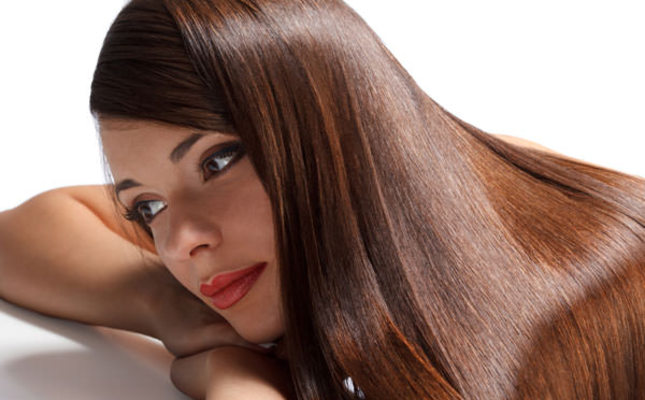Extending beauty and fashion to new heights

Women are constantly bombarded with what the definition of beauty is and how they should look. Very rarely is the source of this beauty questioned. Long silky hair is one of them. Hair extensions are a quick fix but how many people actually know that they comes from South and East Asia?
Western women often use natural hair collected from women in South and East Asia to create hair extensions and wigs. Those who go to hairdressers to enjoy a different look by extending their hair are also often unknowingly receiving it from thousands of Indian and Chinese women supplying the industry.Today's popular culture practically forces women to do everything for the sake of a beautiful and well-kept appearance. The current trade size of the cosmetics sector with its wide range of available beauty products and widespread use of plastic surgery is enough to support this argument. Furthermore, wigs and artificial hair have become two of the most popular fashion trends in recent years. The hair extension industry has introduced different extension methods such as clip-ins and postiche, and although many of us are not familiar with this rising trend, nearly all hairdressers and beauty salons now employ specialists who offer hair extension services to customers.In the past, artists, stage performers and patients suffering from hair loss mainly wore wigs. After a ban on the hijab in universities and many public sector jobs passed in the 1980's, female students wore wigs to continue their education while protecting their religious values in Turkey. Aside from those years when wig sales boomed, hair extensions became a common practice not only in Turkey, but also around the world, particularly in the U.S. and African countries.Hair extension production and application involves complex procedures and techniques. The complicated process starts by collecting different types of women's hair from Eastern countries such as China and India. Until recently, India was the leader in artificial hair integration and has now turned into an independent business line in Asian countries due to the high demand from the West. However, China has surpassed India and now has the highest trade volume in this field. For instance, life is centered on the hair extension industry in the Chinese city of Xuchang, which has a population of 4 million. Compared to China's overpopulated regions specializing in different industries, this small city has turned into the world's hair center. The hair collection, with a history dating back thousands of years, is now a global sector in the hands of Xuchang locals. The city stands out with hundreds of hair extension facilities where thousands of locals have been employed, and for the past 20 years, Xuchang has made significant investments in wigs and other hair extension tools.All-natural hair collected from around the world is brought to the giant hair factories in the city. The collected hair mostly comes from China, India and Indonesia. The hair undergoes a series of chemical treatments and processes turning it into attractive artificial hair that costs more than 40 or 50 times the hair's unprocessed price. The hair is first washed in large vessels and is then followed by the color separation process where the hair is dyed and left for drying. At the final stage, the dyed hair is separated and sent to the relevant division to be prepared as the final product. The factories can produce almost 10 tons of artificial hair by using the hair of 40,000 women. In other words, the hair of 4 million women is required to produce 1,000 tons of artificial hair. Each year, millions of women sacrifice their hair to earn a few dollars. The task is easy: The hair of Asian women adds beauty to Western women in exchange for $60 (TL 135) to $70 (TL 157). However, the artificial hair is sold for up to $8,000 at beauty salons or hairdressers in the far ends of the world, where the total profits from the hair extension industry exceeds $200 million. Considering the life standards in Asia, $60 should not be underestimated. Those who can sell their hair to collectors are also lucky because the facilities accept only good quality hair. Color, brightness and softness are the main qualities considered, even though the hair is examined according to seven quality measures.Chinese hair companies exert great effort to collect natural hair and also produce other artificial hair products to meet the high demand. The leading customer of the hair extension industry is the U.S. followed by certain African countries. It was reported that African women who admire straight hair spend large sums of money at hairdressers and hair salons have become an important part of this appealing industry. The high populations of China and India are advantageous for companies to collect natural hair from locals. Similar to China, India's high population is an advantage, yet poverty is another factor that needs to be addressed. There are also women who sacrifice their hair at temples for religious purposes. According to an Indian tradition, when women get married, they cut their braids at sacred temples as part of the marriage ritual. The hair is then collected by priests and sold at auctions to receive revenue.As you can imagine, the hair of Indian women is in demand because their hair is not generally exposed to chemicals and looks bright. Although Indian women praise their hair, the blond hair of Ukrainian women is the most expensive in the world, especially since there is no need to change its color through a chemical process – which is often done to the hair of Indian and Chinese women. A Ukrainian woman can earn more than $100 if she sells her hair, and while the amount may seem small, they earn significantly more than Asian women.
Last Update: October 24, 2014 02:00
